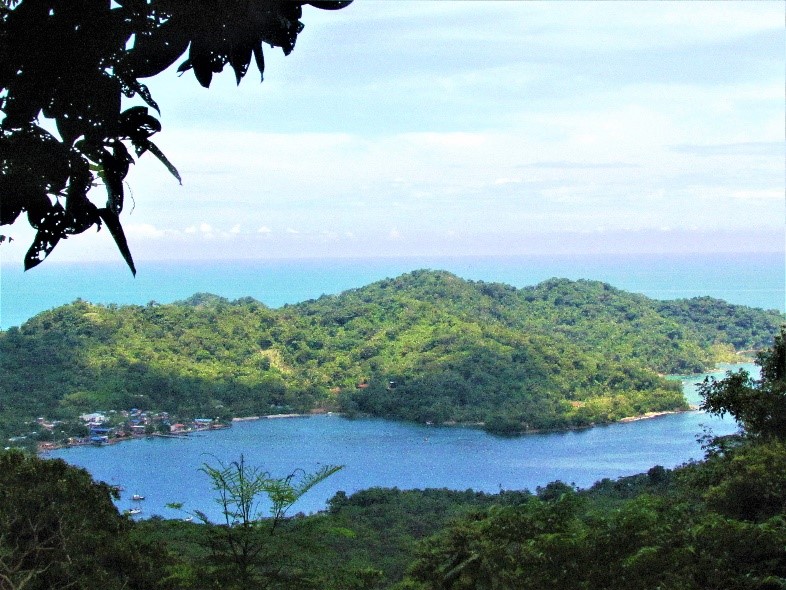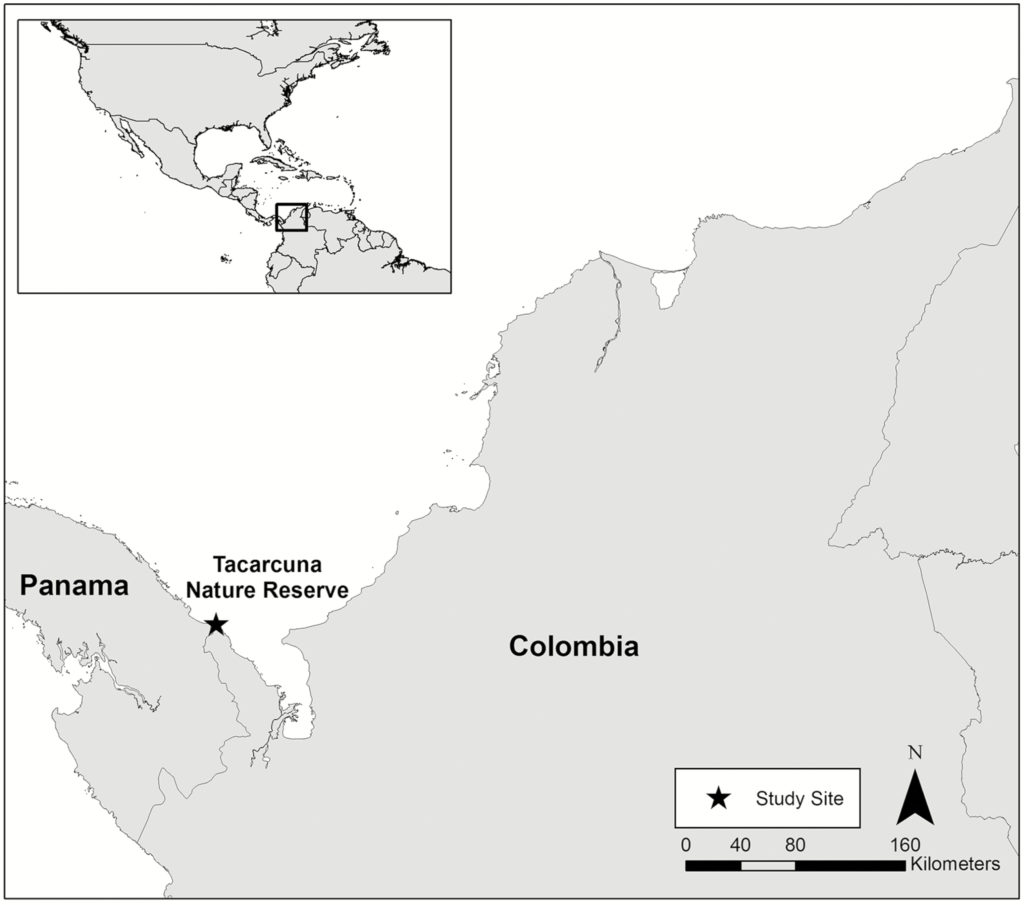By Laura Cárdenas-Ortiz & Nicholas Bayly
Linked paper: Defining catchment origins of a geographical bottleneck: Implications of population mixing and phenological overlap for the conservation of Neotropical migratory birds by L. Cárdenas-Ortiz, N. Bayly, K.J. Kardynal, & K.A. Hobson, The Condor: Ornithological Applications.

As scientists, we are natural explorers, and our passion for migratory birds and curiosity to reveal the mysteries of their migration took us to one of the most spectacular regions of Colombia: the “Darién,” a mythical and impenetrable jungle during the time of the Spanish conquest and still a very wild place in terms of its biological richness.
Many songbirds have vast breeding grounds in North America; in contrast, the tiny land bridge between Central and South America that is the Darién made us wonder how the area might influence migration for populations of warblers, tanagers, thrushes, and flycatchers. This idea inspired us to formulate our first question: where do all these birds come from, and to what extent does this region act as a catchment for individuals from across a species’ breeding range? From there, we considered whether differences in when birds arrive in the region might arise from variation in how far they have to travel, given the broad breeding distributions of our eleven study species. This point is key, because it helps us understand whether birds from different places arrive in the Darién at the same time or if there is a degree of temporal separation, which would prevent millions of birds competing for resources in the same place at the same time during migration.

To answer these questions, we spent each fall between 2011 and 2015 on a little hill shrouded in humid jungle in the Reserva Tacarcuna, Sapzurro, Choco. There, we dodged immense tropical downpours and trudged through the mud and heat to capture migrants every day as part of the SELVA project “Crossing the Caribbean.” To determine the breeding origins of each individual captured, we collected a feather, which, having been grown on the North American breeding grounds, contained a unique isotopic signature of its origin. We shipped our samples to the Environment and Climate Change Canada laboratory in Saskatoon, where they were analyzed for stable hydrogen isotopes as part of Laura Cárdenas-Ortiz’s master’s thesis, with the support of her supervisor Dr. Keith Hobson. This allowed us to estimate the latitude where each bird bred: a region’s unique ratio of hydrogen stable isotopes is fixed in the growing feathers as birds feed.
The results showed that the Darién strongly concentrated populations of six of our eleven study species, with individuals originating from across their entire North American breeding distribution. The catchment area for the remaining five species covered a little more than half of their breeding ranges. We also found temporal separation within the populations of six species, which may act to reduce competition for food or habitat during migration. In contrast, peak migration for all species occurred in October, resulting in a high overlap among species in their use of the Darién.
Our results show how populations of several migratory bird species from across North America converge on the Darién for a short period of time. Given the region’s small geographic extent, this suggests that a migratory bottleneck effect occurs there. Long-distance migrants may be especially vulnerable to factors such as extreme weather conditions and land-cover change due to anthropogenic disturbance when they inhabit the Darién, given its small size. Sadly, the Darién is no longer the pristine forest it once was, and urgent action is needed to ensure that this critical region continues to serve as a refuge for millions of migrating and resident birds and its unique biodiversity.
